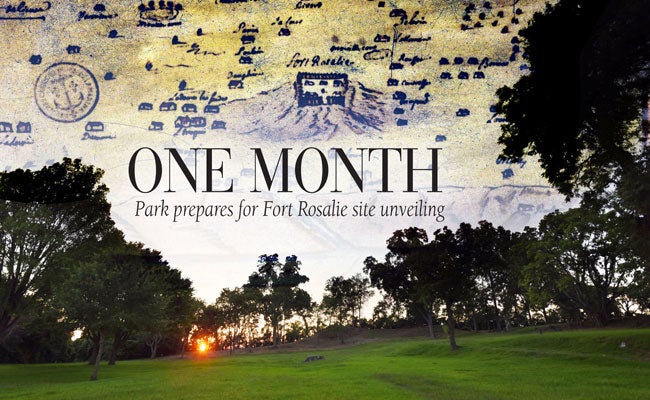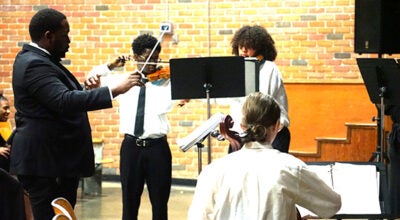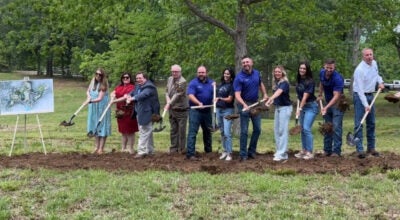Natchez National Historical Park prepares to unveil Fort Rosalie site
Published 12:55 am Sunday, July 3, 2016

- (The Natchez Democrat)
NATCHEZ — On Aug. 3, Natchez will blow out the candles on its 300th birthday.
A centerpiece of that historic celebration will be the dedication of the National Park Service’s third site in Natchez — the site of Fort Rosalie on South Canal Street.
The fort was a strategic point in the struggle by competing European imperial powers for control over the Mississippi Valley.
This location served as a basis for the creation of the Mississippi Territory by Congress in 1798, and the territorial capital was initially located in Natchez.
The NPS has been working to develop and interpret the site to illustrate its significance and plans to open the site to the public Aug. 3.
Natchez National Historical Park Superintendent Kathleen Bond said residents could expect to see activity at the site leading up to the city’s 300th birthday.
Bond said she continues to be resolute in her goal of the NPS offering a safe and meaningful experience for the public who will visit Fort Rosalie Aug. 3.
More trees are to be cut at the site to allow for better viewing of the earthworks on the site.
Fences will also be installed on the site to ensure visitor safety, particularly along the site’s bluff, which is not stabilized like other areas of the bluff.
NPS will put up tables at the site for visitors to picnic and enjoy the location, Bond said.
Paper brochures highlighting the history of the site will also be available by the site’s dedication date.
“By Aug. 3, those are the biggest things people are going to see,” she said.
A team will arrive this month from the Southeast Archaeological Center to begin archaeological work at the site, Bond said. Those team members will remain in Natchez until early August and will be on hand at the birthday celebration to answer questions about the site. Artifacts will also be on display in the visitor center. According to federal law, any artifacts found by members of the public should be left in place and not picked up or removed.
Beyond the Aug. 3 dedication, work is under way on a series of panels — similar to those featured along the Natchez Trails Project — planned for the sidewalk along Canal and Green streets as well as at the Natchez Visitor Reception Center and near the colonnades. The Fort Rosalie experience will be designed to start at the visitor center, Bond said.
The panels will be bilingual, with the text produced in both English and French.
“We are primarily telling a French colonial story,” Bond said. “I think it’s going to be really great for our international visitors, as well as school children who will be studying French.”
In 1716, the French built a simple palisade known as Fort Rosalie on the bluff to promote trade and protect their claim to the region.
Along with the Natchez landing, located beneath the bluff, the fort served as the nucleus of a French agricultural settlement.
The Natchez Indians — who were used as slave labor to build the fort’s earthworks — destroyed the fort in an uprising that engaged a number of African slaves and killed more than 200 Frenchmen in 1729.
The French used African slaves to build a second, larger fort in 1730 as a pentagon-shaped earthwork with a moat. One of those five walls remains at the site, Bond said.
“Fort Rosalie is important because it marks that point in our country’s history of that earliest interaction between the Europeans building colonies and the natives already here, the indigenous people who were initially trying to cooperate until crises came … and they could no longer do that.”
Wooden structures also existed around the fort, which was later occupied by the British from 1763-1779, the Spanish from 1779-1798 and Americans from 1798 until its abandonment in 1804.
The archaeological team will be searching the site for evidence of wooden structures African slaves may have occupied while constructing the second fort.
The preservation and interpretation of Fort Rosalie is important, Bond said, because of the layers of history involving multiple cultures at the site.
Long term, Bond envisions walking trails at the Fort Rosalie that will help visitors navigate the site.
The NPS is exploring more interpretive tools that can be developed for the site, and is investing in a battery-powered sound system for the site to facilitate public programming.
Bond said she foresees Fort Rosalie becoming an important foreign-language site, as NPS focuses on expanding its interpretative materials in more languages.
“Overall, I’m excited that we can reach back to some of the earliest parts of Natchez history, and those are pointing forward as we move into our next century,” Bond said.
The potential for Fort Rosalie to become an important cultural site extends beyond its historical significance and to its prospective impact on cultural heritage tourism, Natchez Interim Tourism Director Jennifer Ogden Combs said.
Fort Rosalie is a tremendous example, Combs said, of the city’s potential to expand its cultural heritage tourism.
“Having the ability to tell multiple stories of our history and heritage is at the heart of what heritage tourism is about, sharing the story of all people,” Combs said.
Fort Rosalie is important for its potential to connect visitors to local history, but it’s also important because it can connect locals to their own history, Bond said.
“Many people have a very strong feeling of connection to the history of Natchez,” she said. “Part of why this is a special place with a special story is that it has not been told before.”





